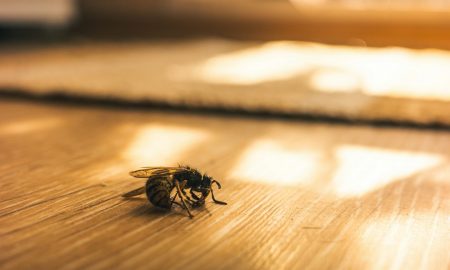
Later, he will appear as the man in black to his ninety-six-year-old son. The son, a retired chemical engineer, will hear a knock on his apartment door. When he peers through the peephole, he spies a tall, thin man in black in a top hat. When he opens the door, no one is there. The incident will repeat several times, with the same result. Nobody there when the son opens the door. Just the wind rustling dry leaves down the flagstone garden path. Pragmatically analytical, he wonders about his vision but then remembers the knocking and the fact that he has never been given to either hearing or seeing imagined things.
The mechanical engineer never anticipated visiting his ninety-six-year-old-son that way. After his own mother died an untimely death attempting to have another child, he metamorphosed from a communicative only child to a reticent one. He would withdraw to his room where he disassembled and re-assembled Victorian mantel clocks. He was determined to learn not only of the relations between the parts, but, furthermore, between the parts and the whole. Quietly terrified, he was meticulous in his investigations, sometimes inadvertently nicking the tips of his fingers on a clock’s toothed gear. After re-assembly, he would sit on a three-legged stool and certify that the clock’s hands moved clockwise at the expected rate.
In the wake of his mother’s death, he realized that these clocks and their clockwise “forward” motion from 12 to 12 were merely manifestations of one theory of time. From clocks, he proceeded to slide projectors, and then later, in adulthood, to contract manufacturing of devices for preserving life in inhospitable environments.
Motivation and manifestation sprang from secret compartments carved into the chambers of experiences that defied ready expression or algorithmic computation. The mechanical engineer never anticipated visiting his son, the chemical engineer, as a momentary apparition on the other side of a closed door, nothing but wind and fallen leaves when his son, hearing a knock, opens the front door. But, then, neither did he expect to make various split-second appearances in his granddaughter’s photo studio—in one instance, carrying a late 1890s slide projector under his arm, the beam of light from the lens the most materialized aspect of the scene. And in a second instance, caught in a bowl of sunlit water by a window on an early August morning in a year in which, had he been alive, he would have stored more than one hundred and forty years of earthly experience under his antique hat.
The granddaughter scrutinizes her photograph of the bowl of sunlit water. A figure seated to the right at the three o’clock position is peering through a lens, hands turning a focus ring, arm sheathed in the sleeve of a black frock coat with white-hot letters floating in the crook below a hazy chin: IOLS. Intraocular lenses? Something else? She notices his long pointy shoes tucked up beneath him, the posture of a perched bird. His task absorbs him completely. She wonders if what he is viewing is what she regards from another vantage point.
But what is she seeing? A sundial of many shapes and colors, gold and rose gold, copper, burgundy, brown, a touch of crimson, flaming orange, black, various shades of charcoal, and bursts of blinding white light. The man in a foreshortened top hat seems to be “there.” But what accompanies him is more puzzling. At his back, she spots a relatively diminutive person holding out a torch as if on guard. Meanwhile, grandfather peers down a lens barrel into the cracked head of a one-eyed Humpty Dumpty with a black steel pot M1 helmet atop a sooty pale face – the World War II helmet promising protection against flying pieces of steel shrapnel and glancing bullets, but not against direct hits, firebombs, flashes many times brighter than the sun, mushroom clouds on the horizon. The next war, and the next. It will take not only all the king’s men, but also all the industrial engineers to put Humpty Dumpty back together again. The construction will be new after mass-produced slaughter. What of the survivors? The mutilated bodies? The shattered minds? The poisoned waters?
Humpty Dumpty’s one rolling eye stares out of a corner, wild. From a tear duct in the opposite corner flows molten lava, sinuous and snake-like, curving sideways, then upwards. Is some great, mute conflict emanating from the eye showing its whites? Fear, aggression, futility, withdrawal? Patience, compassion, reprieve from despair? Staring at the egg’s divided face, split by light and shadows, the granddaughter feels chilled to the bone. The egg lies at the center of the photographed scene, but the action does not stop there. From the egg’s wild eye, a fiery horsehead tipped over on its side emerges that, when viewed straight on, suggests a cobra curling upon itself and rearing up in self-defense.
The granddaughter lingers in the contours, toggling between a forensic and a lyrical gaze. She passes a magnifying glass across the flaming black coils, pausing on the first loop and then the second. Amid the loops—within them, beside them, or above them—she swears she spies acrobatic dancers, the last one, a serpentine variation on a woman shot out of a cannon in a blaze of glory. Only this woman is shooting upwards in a pose reserved for male ballet dancers: a gigantic leap into thin air.
The granddaughter ceases to feel chilled, as if the flame tones are permeating her body. Perhaps there’s hope after all, and the darkness spells illumination. Perhaps grandpa will not be consumed trying to fix the irreparable. Perhaps he’s not peering down a lens barrel into the cracked head of a one-eyed Humpty Dumpty, but, instead, whispering a secret into a listening ear: You’ll go through a trial of indignities to emerge on the other side, a dancer defying gravity.
It’s then that she notices the brilliant mane of light behind her grandfather and perceives her own mother, his daughter, superimposed upon him such that she becomes him yet remains herself, and he becomes her yet also remains himself.
His son, the retired chemical engineer, opens the door. Released from the defense mechanism of stubbornly clinging to acceptable evidence, he recognizes his father as the tall thin man in black. Because now he hears, feels, the warm grain of his remembered voice.
María’s note about the photograph:
I obtained the photographic image by stirring water around in a bowl with a spoon and photographing the interaction between sunlight and the moving water. The resulting photographic images tend to be abstract with uncannily evocative figurative elements. The images are not manipulated. They result from the camera’s freezing of patterns in the water swirling too quickly for the naked eye to grasp. These images constitute a sort of optical unconscious, what surpasses our ability to see in the moment, but that is, nevertheless, there, as the photographic process reveals. However, what is “there” involves continual acts of interpretive perception on the part of viewers, myself included. The flash fiction suggests a way to view this photographic image, but the photograph also exceeds this narrative with its polyvalent indeterminacy.
Photo by Héctor J. Rivas on Unsplash





